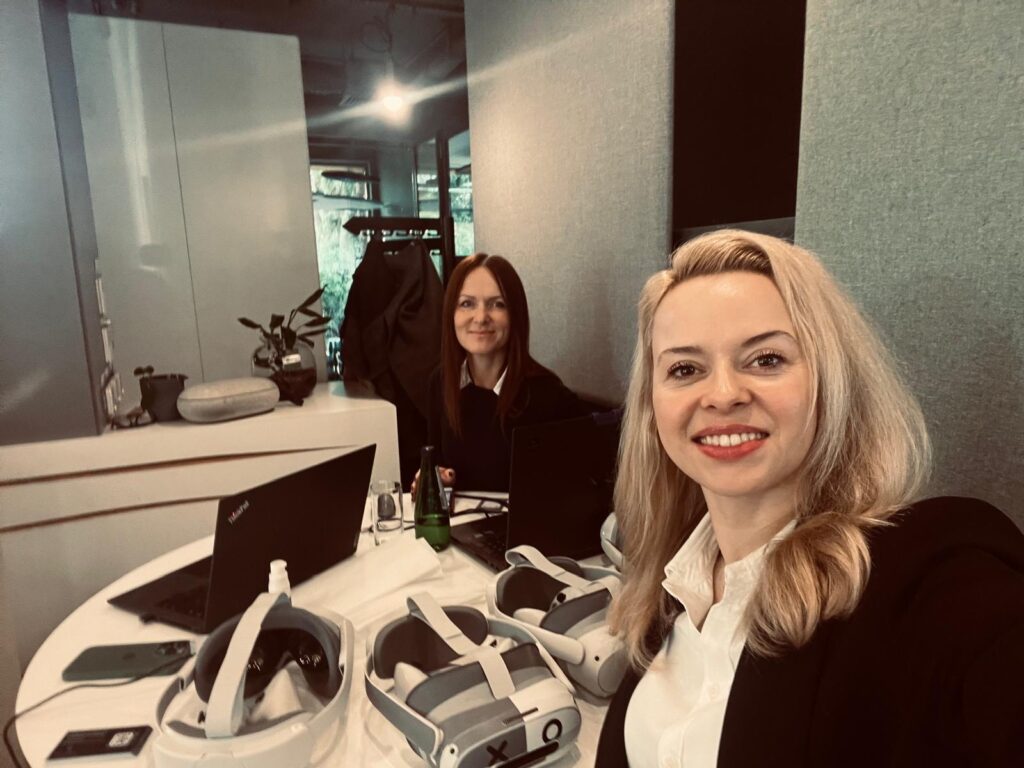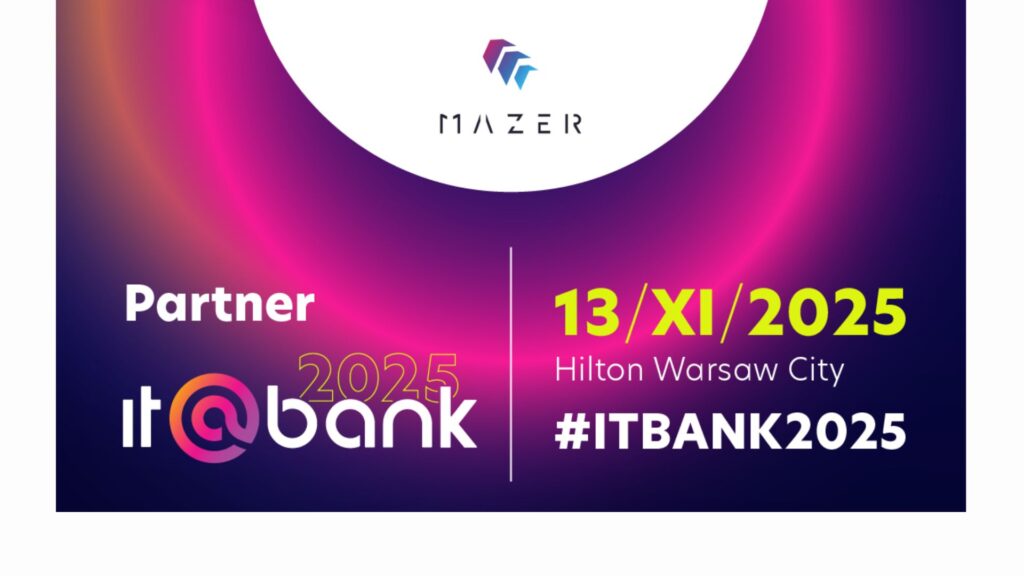How to Persuade Clients to Choose VR-Based Training
Table of Contents:
Convincing clients new to immersive learning methods to adopt virtual reality (VR) training requires a strategic approach focused on clear business benefits and practical evidence. By emphasizing measurable results, addressing common concerns, and showcasing real-world applications, VR training becomes an attractive, must-have solution. How to do this in practice? Read on to find out!
Key Takeaways:
Focus on Business Outcomes: Highlight how VR training accelerates onboarding and upskilling, ensuring high-quality, scalable training across locations.
Present Compelling Evidence: Provide data showing how VR improves knowledge retention and engagement, making it a more effective training method than traditional approaches.
Emphasize ROI and Cost Savings: Showcase how VR training reduces travel, material costs, and instructor hours, offering a strong return on investment.
Leverage Industry Examples: Use real-world success stories to demonstrate VR’s effectiveness in sectors like aviation, healthcare, and finance, building confidence in its value.
Focus on Business Outcomes
Executives want to see how VR training impacts their organization’s goals. Highlight how VR can accelerate onboarding and upskilling, enabling employees to reach competence faster while maintaining consistent, high-quality training across locations. This approach aligns with how companies effectively scale VR training programs, ensuring maximum reach and impact.
Delivering training that helps organizations achieve these aims is the primary reason companies invest in VR for training. Decision-makers respond well to data-backed results that demonstrate reductions in errors, improved retention, and greater learner engagement.
Present Compelling Evidence
Data points are powerful persuasion tools. VR training has been proven to enhance knowledge retention and engagement significantly compared to traditional methods. According to industry statistics, learners often complete VR courses more quickly, with substantially higher motivation to apply new skills on the job.
Sharing evidence for the effectiveness of VR training, along with insights from various learning departments, reassures clients that VR is not just hype, but a scientifically validated method for transforming workplace learning experiences.
Address Investment and ROI Clearly
Upfront costs often cause hesitation. However, VR training programs offer substantial return on investment by reducing travel expenses, material costs, and instructor hours. Moreover, VR content is reusable and easily updated, helping companies save resources long term.
By focusing on how to measure the impact of virtual training and demonstrating strong ROI, you position VR not just as a cost, but a strategic investment. Many businesses have expanded their training portfolios with immersive VR solutions that engage learners and lower per-learner cost.
Emphasize Safety and Hands-On Practice
In high-risk industries such as manufacturing, aviation, or healthcare, ensuring safety training is non-negotiable. VR provides an unrivaled safe environment where employees can repeatedly practice complex or hazardous scenarios without real-world dangers.
Demonstrating how VR fire safety training and leadership skills development utilize immersive simulations to prepare employees for critical situations fosters trust and makes VR a straightforward solution for hands-on, risk-free learning.
Leverage Personalization and Accessibility
Personalized learning paths are another key advantage. VR courses can be customized to fit specific client needs and workflows, ensuring relevance and user engagement. Platforms that enable custom VR course creation facilitate these tailored experiences, offering measurable performance improvements.
Accessibility matters too; VR supports distributed, remote, or hybrid teams by allowing flexible, anytime-anywhere training access. This makes it ideal for preparing future workplaces that prioritize digital transformation and employee development.
Overcome Common Concerns
Clients often worry about the complexity of implementation, user adoption, and the acceptance of new technology. Providing clear information on how to implement VR training programs with proven platforms alleviates concerns. Showing data about the successful onboarding of diverse groups, including Gen Z and older individuals undergoing reskilling efforts, strengthens confidence.
Transparency about common challenges and how they are solved during VR deployment builds credibility and reduces hesitation.
Support With Industry Examples
Real-world proof speaks volumes. Referencing the use of VR training in aviation, banking and finance, leadership, and emergency services provides relatable success stories that highlight its effectiveness. These examples demonstrate VR’s versatility and effectiveness across sectors, helping clients envision the technology within their own contexts.
Conclusion
Position VR training as a critical step toward modern workforce development and operational excellence. Companies that invest in VR experience faster knowledge transfer, cost savings, and higher engagement. Essential for staying competitive.
By guiding clients through these messaging points naturally intertwined with facts and examples, VR becomes not just an option but a strategic imperative for learning and development.
How can VR training impact business outcomes?
VR training can accelerate onboarding and upskilling, enabling employees to reach competence faster while maintaining consistent, high-quality training across multiple locations. By scaling VR programs, companies can ensure maximum reach and impact, resulting in reductions in errors, improved retention, and greater learner engagement. This direct impact on business goals is why companies invest in VR for training.
What evidence supports the effectiveness of VR training?
Studies show that VR training significantly enhances knowledge retention and engagement compared to traditional methods. Learners often complete VR courses faster, with higher motivation to apply new skills on the job. Sharing these data points and industry insights can reassure clients that VR is a scientifically validated method for transforming workplace learning experiences.
How does VR training offer a strong return on investment?
Although initial setup costs may be high, VR training programs offer substantial long-term ROI by reducing travel, material, and instructor costs. Furthermore, VR content is reusable and easily updated, helping companies save resources over time. By demonstrating how VR training can lower per-learner costs and offer measurable impact, businesses can see VR not as an expense, but as a strategic investment.
Why is VR training especially useful for high-risk industries?
VR training provides a safe, controlled environment for practicing complex or hazardous scenarios. Industries such as manufacturing, aviation, and healthcare can benefit greatly from VR as it allows employees to practice safety protocols, technical skills, and emergency response without real-world risks. This makes VR an invaluable tool for hands-on, risk-free learning in high-stakes industries.
What are the key advantages of VR training for employees?
VR training offers several key benefits for employees, including improved engagement, hands-on learning, on-demand access, and the ability to experience realistic scenarios that are difficult or dangerous to replicate in real life. These factors enhance employees’ motivation, confidence, and competence, ultimately contributing to their overall performance and skill development.

Author: Rafał Siejca
Rafal has over twenty years of corporate experience, including roles at Millennium Bank, Comarch, and leading software teams at PZU, one of Europe’s largest insurance companies. As one of Poland’s few true VR experts with a decade of experience, he ensures timely, high-quality project delivery as CEO and CTO.










